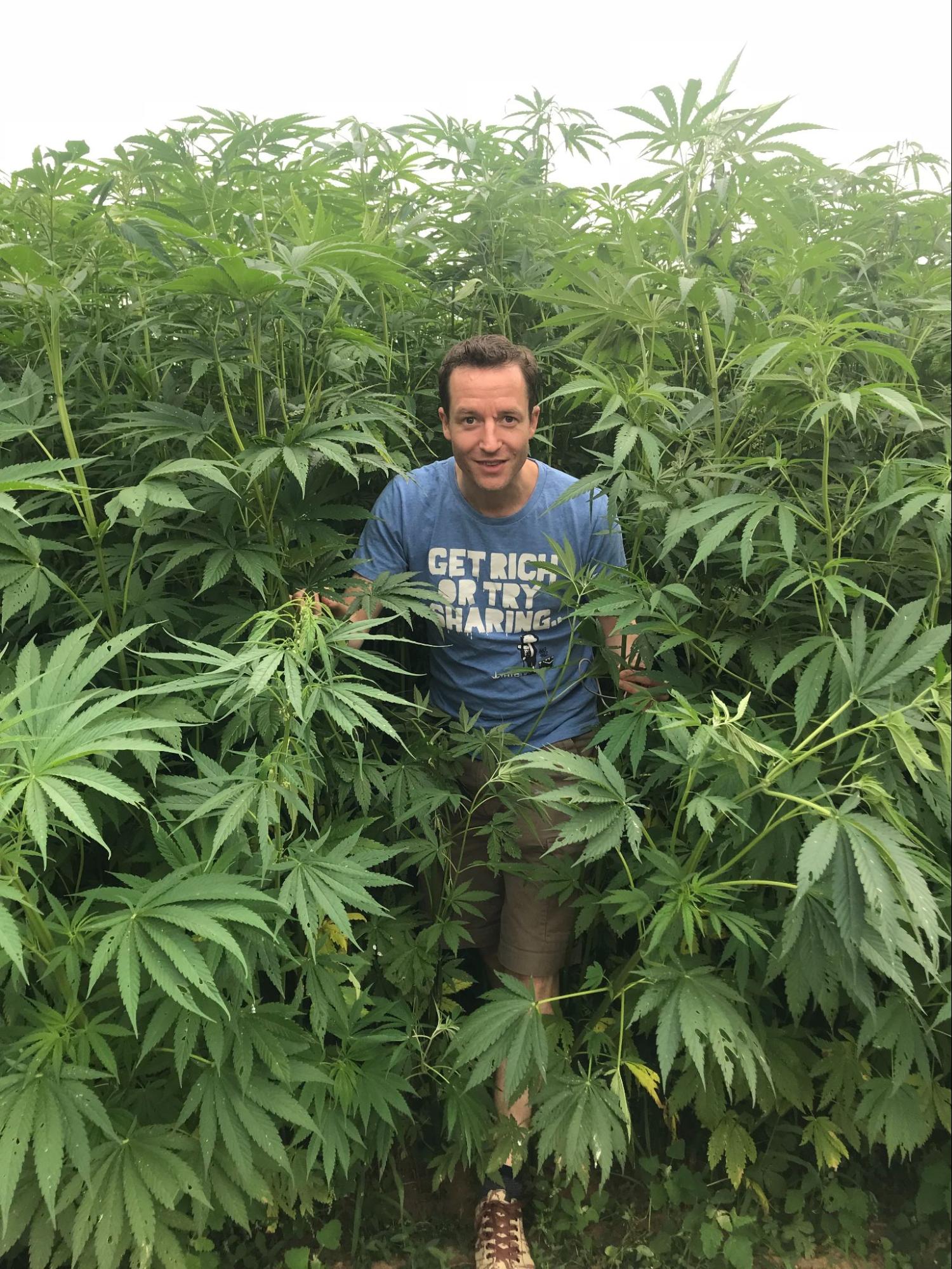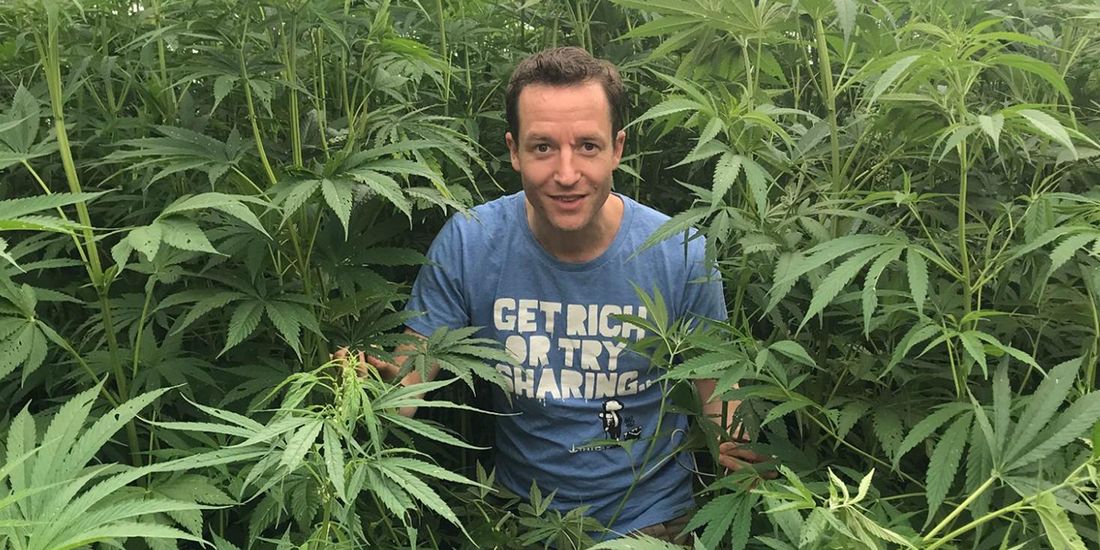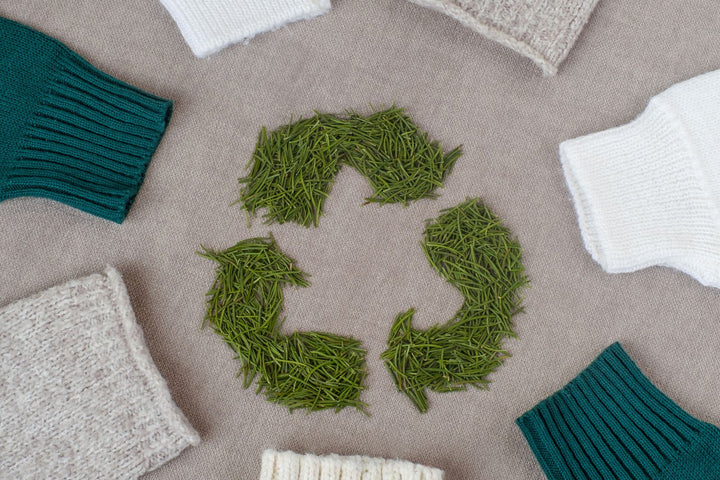Hemp - humanity’s greatest fabric?

Gav, THTC’s founder, in a hemp field somewhere in China
Calling ourselves The Hemp Trading Company, we’re obviously going to be massively biased in writing about the fantastic wonder-plant we’ve been making clothes from for the last two decades. But there is a material reason why many of our customers have had their t-shirts for over 15 years (pun intended). It’s darn strong (oops, another fabric pun).
But is hemp really a more durable and eco-friendly fabric compared to conventional cotton? Despite the benefits of hemp and its sustainability, why isn’t it more popular across the world? And how can you keep your hemp threads lasting longer?
Is hemp really that strong?

Hemp Bast and Core
In a word, yes. A 2019 science literature review identified hemp fibres as among the strongest of all natural fibres, more robust than China Grass (the next strongest natural plant fibre), yet is stiffer than its comparable synthetic fibre, E-glass. High tensile strength, and high compression strength are among the many documented advantages of hemp. The majority of scientific investigation into industrial hemp as a material has been chiefly around its use as a composite material - something that is woven into other materials to make a new one that’s even stronger.

Hemp fabric at one of our partner production facilities, ready to be dyed
Looking at the very ancient history of hemp, we can see how prehistoric humanity identified hemp as being among the most durable of naturally occurring fabrics and one of the first-ever utilised!
Why is hemp so strong?
Hemp fibre’s durability is due to its naturally-occurring long fibres relative to other natural plants. In a series of studies published in 2003, researchers Sain and Prasad at the University of Toronto showed that hemp fibres possess higher tensile and compressive strengths than steel.
Nature is a helluva beast to create such a strong fibre in the first place. However, man’s close relationship with hemp over hundreds of thousands of years has meant that our civilisation has guided much of the evolution of the plant we see today through selective breeding for preferred traits.
If you’re interested in learning more about the cannabis sativa plant and its relationship with humans, one book that we would recommend you get is Cannabis: Evolution and Ethnobotany, by Robert C. Clarke and Mark D. Merlin, which is referenced throughout this blog.
History of Hemp - Strong Through the Ages
The beneficial parts of hemp (materially speaking, of course!) can be found in the stalk. The stalk itself contains the bast (the long fibres), which are in the bark and hurd, with shorter fibres coming from the core of the stem. When hemp plants reach the end of their lifecycle, they wilt - but the fibre remains after most of the green mass has rotted away. Early man would have found hemp fibres simply lying on the ground around their nomadic settlements.

Ancient Egyptian carvings depict the cultural use of hemp
Pollen fossil records show that hemp and its ancestors have their roots in Central Asia, in what is now China. Hemp is thought to have played a pivotal role in helping humanity transition from being simple hunter-gatherers to agriculturalists, fishing communities, and sailors - its fibres were strong enough to weave rope and thread, which bound weapons and made the first items of clothing. The oldest surviving archaeological samples of finished material were rope, binding fibres, and ceremonial clothing are more than 10,000 years old (7000 BP) and were discovered across China and the Japanese peninsula.
The Antrea Net is the oldest known fishing net in the world, dating to around 9350 BP. Analysis revealed it was woven with linen from willow - and strengthened with hemp fibres. Many other archaeological finds conducted across maritime civilisations have shown their preference for utilising hemp in fishing tools. But hemp’s relationship with the sea doesn’t end there. Bronze age civilisations soon began using hemp cordage and weaves for their sea-faring - another tradition that remains today.

The Antrea Net (Source: Wikipedia)
During his reign, Henry VIII issued an order to significantly expand the British Navy in the UK. A single sailing ship of the age required more than a mile of strong rigging cordage. Thus, a vast amount of durable hemp was needed to produce the necessary rope and canvas. Henry VIII imposed stiff penalties for those who didn’t contribute to the ‘war effort’, employing ‘collection agents’ to ensure serfs and landowners were doing their part. The Tudor Navy thus became the basis for Britain’s future imperial dominance at sea.

Throughout Europe, hemp’s strength, and antimicrobial/antibacterial properties lent themselves to ‘mythic’ significance, with the plant and its material featuring in a host of ancient rituals, cultures, and stories. In Slavic nations, vast amounts of hemp fabric were often used for dowry. In the Montenegro region, a common superstition was that if a woman had been unfaithful to her husband, his hemp belt would snap while he danced - and a familiar ‘divorce ritual’ was to tear each other’s hemp belts off.
Hemp was also the traditional material of the hangman’s rope. In addition, it was the material of choice for traditional mourning or burial wear in both Europe and Asia - which might also have something to do with it’s resistance to mildew and fungal growth. Its association as a material that transports people between worlds is reflected in much of global folklore and the many finds of hemp burial shrouds in places such as ancient Palestine, France, and Russia.
Hemp in the world today
In the last ten years, the western world has seen a resurgence in hemp farming as archaic laws governing the cultivation of cannabis sativa crops are stripped away, and the introduction of the Farm Bill in the USA. Hemp agriculture was the cornerstone of many human civilisations. It was only outlawed as recently as 1937 in America, with the introduction of the ‘Marihuana Tax’.
The infamous tax was designed to criminalise black and Mexican peoples in America and discourage its use relative to the other ‘economically competitive’ products such as Cotton, Timber and Synthetic Plastics. These were industries that were historically owned by a wealthy elite. America’s global influence meant that anti-drug laws soon spread across the globe.
After hemp’s prohibition in the West, the world’s largest producer of hemp and cannabis was the Soviet Union. The USSR had over 741,000 acres of land dedicated to hemp fibre, with special commendations and medals for the farmers who produced the highest yields.

USSR Master Hemp Farmer Badge - Source: Reddit
After the USSR’s sad collapse in the 1990s, China became the world’s biggest producer and exporter of hemp fabric and composite materials, followed by Korea. Hemp production survived in Asia due to its strong ties to traditional cultures, rather than a strong need for sustainable fabric. However, hemp lost out in the West due to prohibition and subsidies to the cotton and petroleum industries, won through lobbying. This is not to mention the ideological battle to paint cannabis as a ‘degenerate drug’ used by people of colour and hemp as a material for ‘poor people’.
Hemp in the mix - strength in diversity
From its earliest days, hemp has often been used as a composite material - that is, it blends with other materials. One of the main ways of making hemp materials is to hand-weave together strips of hemp with other fibres to create a yarn. This has often been linen, cotton or flax in the case of fabrics.
In terms of sustainable fashion, using hemp fibre is a natural win for the creator community. A smaller environmental impact than other fabrics - especially synthetic petroleum.

Hemp Denim - courtesy of our pals at The Hemp Shop
Guy Carpenter, president of Bear Fiber, a North Carolina-based supply chain management firm that specialises in hemp, pointed out in a 2019 interview that “just an addition of 15-20% of hemp fibre into a yarn can make a fabric significantly stronger and more abrasion-resistant.”
THTC’s hemp clothing is mostly 55% organic hemp, blended with organic and reclaimed cotton fibres - except for our socks and boxers, which are also incorporated with elasticated materials. The trick then is to ensure a fabric weight that isn’t too heavy, is breathable and allows moisture to wick through and heat to quickly disperse. Our earliest t-shirts back in 2019 were around 450GSM - which nowadays might feel like a monk’s cassock! Today, our t-shirts are a lot lighter - around 250-300 GSM, which you’d usually find in a regular t-shirt shop.
Our warehouse used to be filled with a whole raft of hemp-blended prototypes - hemp jeans, hemp shoes, hemp belts - even hemp hats.
Hemp’s little (big) problem - and how we can fix it
Hemp grows pretty much anywhere. It grows incredibly fast - taking just 90 days from seed to harvest, compared with 150 to 180 days for cotton. It uses much less water - about half as much per season and requires no pesticides or herbicides. As we’ve mentioned time and time again, the plant is incredibly multipurpose. We can make paper, textiles, medicine, skincare and even construction materials and fuel.
However, each product requires specialist machinery with its own production and supply line. Current market economics means that hemp-for-fibre in the West is not a widely adopted crop. Compared with cotton, hemp requires extra steps for processing, which adds to its price tag. To separate the fibres from the rest of the plant, you need to undergo the process of decortication or retting. CBD/low thc and hemp-for-seed varieties provide the most $/acre. Given the massive differences in how hemp is commercially processed depending on its end-use, many farmers simply ship their ‘waste’ hemp fibre as animal bedding or bin it in the worst instances.
Hemp agriculture is essentially a hundred years and a few billion dollars in applied research behind cotton and petroleum. Support of the hemp industry needs to be a political intervention through either an agricultural subsidy, state-funded innovation, or a community-led cooperative movement akin to the Preston Model.
Keeping your hemp clothing strong and long-lasting

While hemp is pretty strong - the modern world can throw a lot at us. We have three essential tips for keeping your hemp clothing lasting upwards of 10 years - a bonus being that hemp softens over time, if treated right!
Repair - don’t throw
The weakest part of any t-shirt or shirt will be the seams and stitching. Often, thin thread at the most active areas around the waist, elbows and armpits will come apart first. The hemp material will stay strong, and a restitch will give your clothes a new lease of life. Try your local dry cleaner - or take a clothing repair class if you want to be self-sufficient.
Avoid tumble-drying
While it gets your clothes dry quickly, tumble-drying can put all your clothes under a lot of mechanical and thermal stress - not to mention the energy cost. Drip dry in the shade is always best.
Wash at a low-temp
From an ecological standpoint, low-temperature washing with a non-bio detergent is generally better for the environment. Washing with an effective low-temperature wash can indeed help your clothes last longer.


